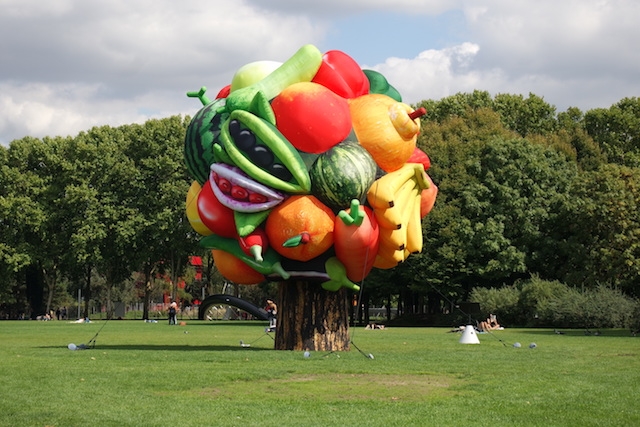ArtReview Asia is going to be kicking off its winter season in Shanghai, so, naturally, that’s where you’re going too. Hey – that’s how it works: ArtReview Asia leads and you follow. Don’t worry though, you’re not being Shanghaied in that sense; there are genuine reasons to visit China’s largest city this November. So ultimately you’ll be going of your own free will. As much as such a thing exists. (At this point you might want to refresh your memory of David Lewis’s 1981 essay ‘Are we free to break the laws?’.)
West Bund Art and Design, West Bund, Shanghai, 8–11 November
Now in its fifth edition, the expanded West Bund Art and Design fair features over 110 international galleries and takes place in over 20,000sqm of exhibition space on the site of Shanghai’s original airfield (and you’ll be reminded at this point that it also provides the setting for J.G. Ballard’s 1984 memoir, Empire of the Sun). Given the amount of space available, the fair has traditionally (as much as the four previous editions constitute a tradition) been a site for more ambitious and experimental presentations than risk-averse commercial galleries might otherwise try to pull off in China. Working with that is ArtReview Asia’s Xiàn Chǎng (you’ll have reached for your New Age Chinese–English Dictionary at this point, and having rifled through it, worked out that xiàn chǎng might variously be translated as ‘the setting’, ‘the stage’, ‘the scene of the crime’, etc) section of the fair, which features solo projects (in the form of sculpture, painting, moving image and installation). This year you can look forward to 14 presentations by Francis Alÿs, Choi Jeong Hwa, Shezad Dawood, Dickon Drury, Sam Falls, Joyce Ho, Liu Jianhua, Tatsuo Miyajima (offsite), Takashi Murakami, Julian Opie, José Patricio, Lawrence Weiner, Cerith Wyn Evans and Zhang Enli.
ART021, Shanghai Exhibition Centre, 9–11 November
While ArtReview Asia takes a minute to think about the implications of determinism in its soft and hard forms, you might also want to visit Shanghai’s other art fair, ART021, which takes place in central Shanghai, in the Shanghai Exhibition Centre, originally constructed (along with its identical Beijing counterpart) as the Sino-Soviet Friendship Building in 1955. There you’ll be able to see some old friends from West Bund (some galleries present at both fairs) as well another hundred or so galleries from around the world. Between the two fairs you might even begin to draw some conclusions as to what’s hot and what’s not in China at the moment.
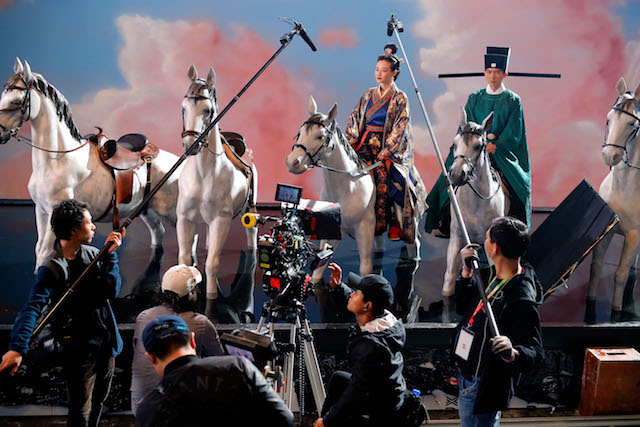
Shanghai Biennale, Power Station of Art, 10 November – 10 March
But if you’ve been reading ArtReview Asia for a while you won’t be some simple follower of fashion. And that’s why, all art-faired out, you’ll be heading off to the Power Station of Art and this 12th edition of the Shanghai Biennale, curated by Mexican art historian Cuauhtémoc Medina and titled Proregress – Art in the Age of Historical Ambivalence. If that sounds a bit clunky, its guiding metaphor – the concept of yubu, a Daoist dance step in which the performer seems to be going backwards and forwards at the same time – might shed more of a light. Indeed it provides a framework, according to Medina will allow him to ‘explore the role of contemporary art as a means by which the struggles and anxieties of many different latitudes are reflected and turned into subjective experience, training the contemporary subject in the ambivalence the allows us to tolerate the contradictory forces of contemporary life’. Perhaps it will even help you to process the experiences you just had in those art fairs. Look out, at the Power Station, for works by Nadim Abbas, Kader Attia, Yang Fudong and Tomoko Yamada among others.
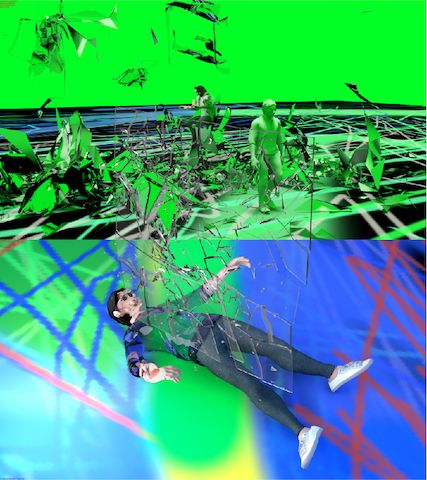
Samson Young, Edouard Malingue, Shanghai, 6 November – 23 December
Over at Edouard Malingue one of Hong Kong’s favourite sons, artist–musician Samson Young, will display a new work, titled The highway is like a lion’s mouth. It’s the English translation of a slogan associated with a 1990s government-sponsored jingle that was used to educate children about the dangers of jaywalking. You’ll also find two series of new sound drawings by Young (My car makes noises and Solid) as well as a theme park bumper car in the shape of a gigantic 3D-printed shoe.
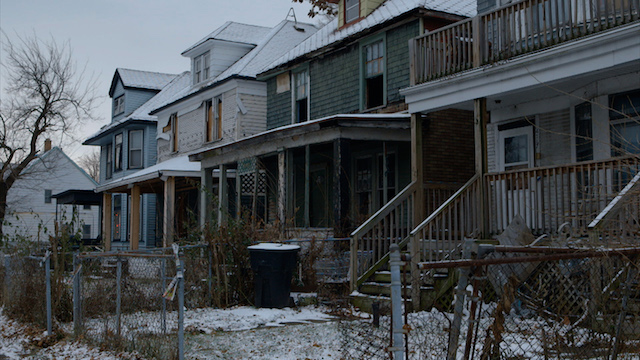
Heteroglossia, How Museum, Shanghai, 7 November – 17 February
Meanwhile, at Shanghai’s How Museum, Young’s work is included in a group show aptly titled (given the artist’s previous work with choirs and multiple voices) Heteroglossia. Expect the theme to encompass something beyond issues of multiplicity and difference in voices and language and to expand to articulations of difference and similarity as seen in, for example, in the rise of globalism and nationalism. Alongside Young, look out also for works by Cao Fei, Ho Tzu Nyen, Fiona Tan and Wang Qingsong. And just in case you were in Shanghai and somehow managed to miss him, Young also has a work in the Shanghai Biennale, where you can experience the latest instalment of his Muted Situation series – No. 22: Muted Tchaikovsky’s 5th (2018), for which the artist invited the Cologne’s Flora Sinfonie Orchester to play Tchaikovsky’s work with the musical notes muted so that the background noise of the performance comes to the fore.
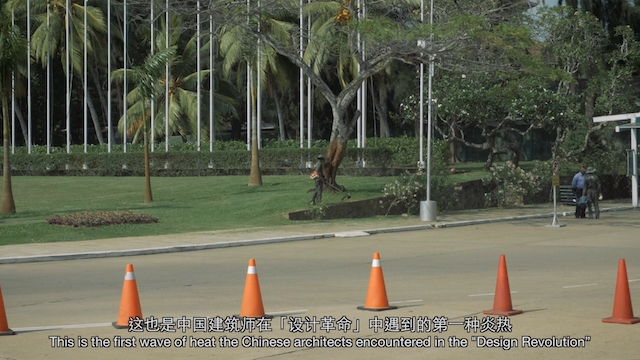
Steadfastly Raise the Standards of Nonconstructive Production at Don Gallery, Shanghai, 6 November – 30 December
Don Gallery’s group exhibition Steadfastly Raise the Standards of Nonconstructive Production easily wins the prize for best exhibition title of the season. The title itself harks back to People’s Daily editorials from the 1950s that campaigned about waste in all its forms (anti-formalism, anti-reactionism and anti-waste went hand in hand at this time) during China’s programme of rapid urban and industrial construction, while the exhibition seeks to place this in the context of China’s current commercial real-estate boom (which operates without a modern design tradition that goes beyond the country’s midcentury ‘three-floors-in-three-days’ policy; you’ll be wanting to read some Henri Lefebvre here). Not every show is about nature. Mapping out the architectural terrain will be Fei Yining’s videowork New Clear War (2018), Feng Junyuan and Zeng Jiahui’s documentary work Two or Three Kinds of Heat (Chapter One) (2018) and the minimal elegance of Zhang Ruyi’s sculptures and interventions.
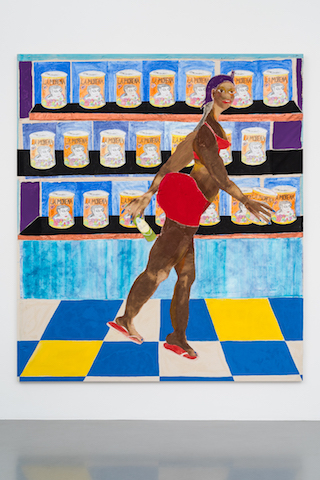
Tschabalala Self at Yuz Museum, Shanghai, through 9 December
After that you’ll want to pop next door to the Yuz Museum: not for the museum’s nondescript (that’s being generous) architecture; rather, for a display of paintings, sculptures, photographs and videos by Harlem-born Tschabalala Self. All the works on show explore the context of the bodega (here meaning the generally family-run corner shops found in New York) as a social nexus for communities of colour. Such places are ‘a lighthouse in an ocean of gentrification’ according to Self, who also claims that the bodega represents something of the past in a cityscape that is constantly seeking to assert its contemporary presence. Indeed the presence of such works in the rapidly gentrifying West Bund district should make her thoughts even more acutely felt. No less a critic than The New Yorker’s Peter Schjeldahl has described Self’s work (which often centres on representations of the black female body) as being in the vein of Arshile Gorky and Willem de Kooning; here’s a change to put that theory to the test.
Louise Bourgeois at Long Museum, West Bund, Shanghai, through 24 February
On the subject of American classics, the Long Museum West Bund will host the first Chinese retrospective of the work of Louise Bourgeois (OK – Franco-American classics, but that wouldn’t have made the transition so smooth). Titled The Eternal Thread (I’m thinking The Bangles now; you shouldn’t) which references both Bourgeois’s family’s involvement in the tapestry industry and the artist’s investment in fabric and sewing (particularly during the last 15 years of her career), from the Personage sculptures of the 1940–50s, through the Cell installations of the 1990–-2000s, to various explorations of the relationships between mother and child and those later fabric works. There will, of course, be the giant spider Maman (1999) looming above it all. Despite its current resonance as an extra from Peter Jackson’s Lord of the Rings trilogy (2001–03), for Bourgeois, the spider represents the nurture and protection afforded her by her mother, a weaver. A psychologist would have (and most probably has had) a field day; you’ll have to choose your interpretation for yourself.
From the Winter 2018 issue of ArtReview
